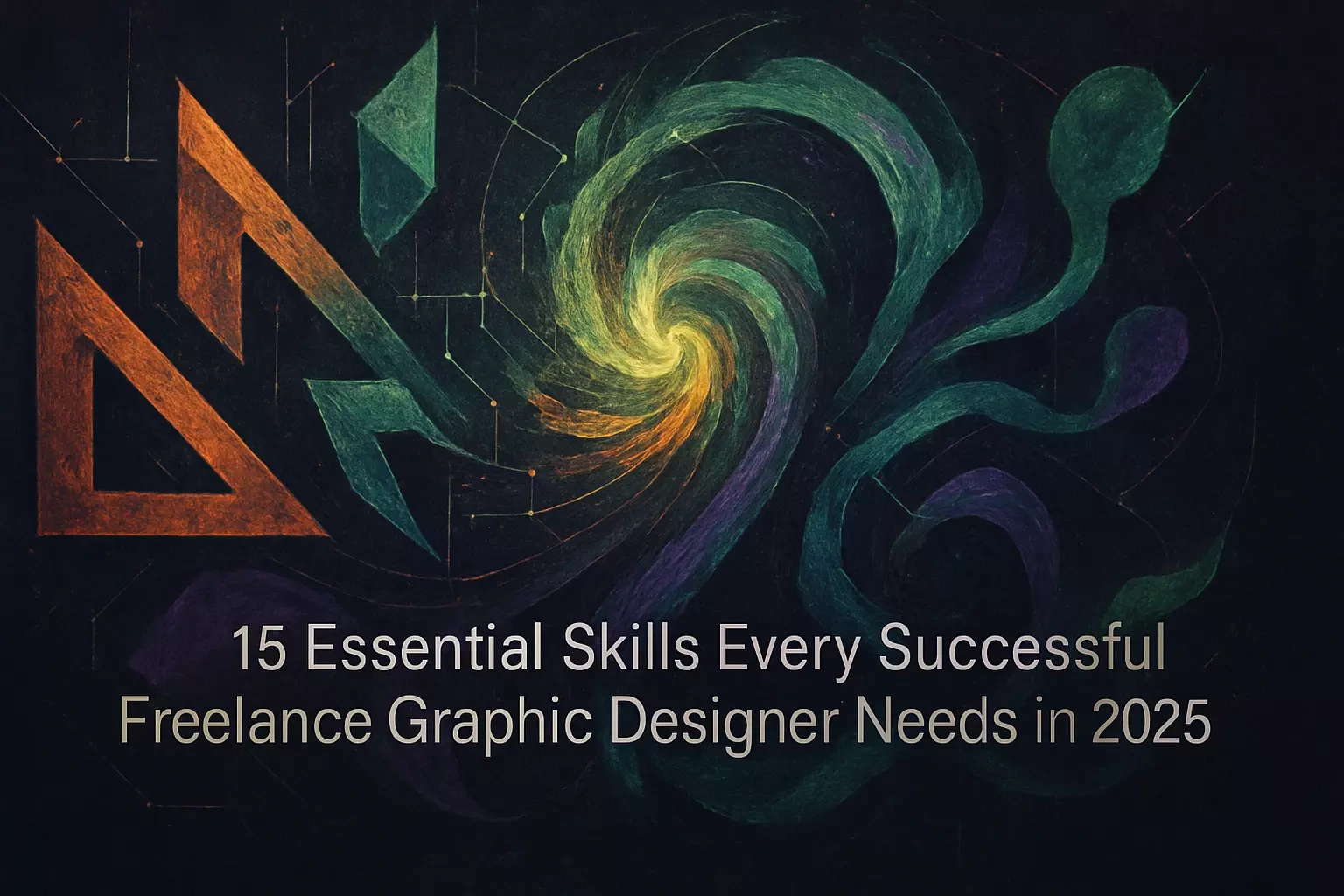15 Essential Skills Every Successful Freelance Graphic Designer Needs in 2025

15 Essential Skills Every Successful Freelance Graphic Designer Needs in 2025
Foundational Technical Skills for Graphic Design
1. Mastery of Design Principles
2. Proficiency in Industry-Standard Software
3. Understanding of Branding and Visual Identity
4. Web Design Fundamentals (HTML/CSS, UX/UI Basics)
5. Print Design Knowledge
6. Ideation and Conceptualization
Crucial Soft Skills for Freelance Success
7. Effective Communication (Written and Verbal)
8. Client Management and Relationship Building
9. Time Management and Organization
10. Problem-Solving and Critical Thinking
11. Adaptability and Flexibility
12. Business Acumen (Pricing, Negotiation, Contracts)
13. Marketing and Self-Promotion
14. Attention to Detail
15. Creativity and Innovation
The Importance of Continuous Learning and Skill Development
Staying Updated with Design Trends
Learning New Software and Technologies
Seeking Feedback and Mentorship
How to Showcase Your Skills Effectively
Through Your Portfolio
In Client Interactions and Proposals
Conclusion: The Well-Rounded Freelance Graphic Designer
References
15 Essential Skills Every Successful Freelance Graphic Designer Needs in 2025
Foundational Technical Skills for Graphic Design
1. Mastery of Design Principles
2. Proficiency in Industry-Standard Software
3. Understanding of Branding and Visual Identity
4. Web Design Fundamentals (HTML/CSS, UX/UI Basics)
5. Print Design Knowledge
6. Ideation and Conceptualization
Crucial Soft Skills for Freelance Success
7. Effective Communication (Written and Verbal)
8. Client Management and Relationship Building
9. Time Management and Organization
10. Problem-Solving and Critical Thinking
11. Adaptability and Flexibility
12. Business Acumen (Pricing, Negotiation, Contracts)
13. Marketing and Self-Promotion
14. Attention to Detail
15. Creativity and Innovation
The Importance of Continuous Learning and Skill Development
Staying Updated with Design Trends
Learning New Software and Technologies
Seeking Feedback and Mentorship
How to Showcase Your Skills Effectively
Through Your Portfolio
In Client Interactions and Proposals
Conclusion: The Well-Rounded Freelance Graphic Designer
References
Posted Jun 11, 2025
Beyond software: discover the crucial technical and soft skills freelance graphic designers need to thrive, from design principles to client communication.






